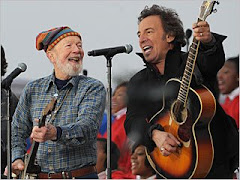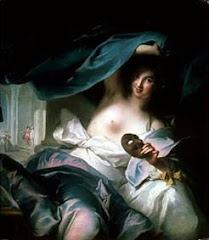Writers spend a lot of time on their opening paragraphs, and rightly so. Then we stand on the corner, displaying our wares under a streetlamp, waiting for a reader (or agent, or editor) to drive by. When they slow down, or stop at a red light, we boldly slink out to the curb, holding the first manuscript page of our novel up to the car window, pointing to that first seductive sentence, the alluring opening paragraph, the irresistible hook that will charm them into opening the passenger door and inviting us in. Hooker and hookee, together at last in a kind of erotic literary eHarmony dream.
But—and I apologize if you wanted me to pursue this dream further—what about the final paragraph of the novel? How about that moment on page 324 when you’re exhausted from months of writing, and the plot’s resolved, and the characters have done about all the damage you can handle, and it’s time to end the damn thing? Do you have the creative energy and vision left to write a strong ending? After all the blood, sweat, and tears, maybe you owe it to yourself, and to your story, to write a great ending.
Let’s look at a few famous endings in fiction and see what we can learn. You’ll have your own favorite endings, the ones that have influenced your own writing, whether consciously or not, but these are some of mine.
At the end of Gone With the Wind, after a thousand pages of life with Scarlett and Rhett and friends, after all the triumphs and defeats, all the living and suffering and dying, what image does Margaret Mitchell leave us with? It’s Scarlett O’Hara alone, because Rhett Butler has just walked away from her life again, rejecting her at the end of a long dialogue scene in which the two revisit their past and current feelings. After Rhett disappears up the stairs, and out of her life again, Scarlett is left alone, and in these final moments of chapter 63, and the novel, we are inside the heroine’s mind. Here are the last two paragraphs.
With the spirit of her people who would not know defeat, even when it stared them in the face, she raised her chin. She could get Rhett back. She knew she could. There had never been a man she couldn't get, once she set her mind upon him.
"I'll think of it all tomorrow, at Tara. I can stand it then. Tomorrow, I'll think of some way to get him back. After all, tomorrow is another day."
Romantic enough for you? Hopeful enough? Well, that’s our Scarlett. She’s going home, the place that, as Dorothy Gale reminds us in The Wizard of Oz, there’s no place like. Not a bad ending. Not a bad first novel for Margaret Mitchell. Sold a few copies. We’re left with the image of a strong heroine, going home to Tara for comfort and strength, to rise again, to win back her man.
Picture that ending. It has a sharp image, tightly focused on the central character, and it evokes strong emotions, for Scarlett, for Margaret Mitchell (imagine her writing that ending), and for the reader. The emotional ending is not gratuitous. Scarlett, and her creator, and the reader have gone through an amazing long journey to reach that ending; they deserve it.
F. Scott Fitzgerald, at the end of The Great Gatsby, leaves us with the narrator, outsider Nick Carraway, about to go home again, to return to his roots in the Midwest. But first Nick revisits another home, Gatsby’s Long Island mansion. The house is quiet now. Its wild parties have receded into the past, along with its owner. In the final paragraphs Nick imagines the “old island here that flowered once for Dutch sailors’ eyes—a fresh, green breast of the new world.” Then, in the novel’s closing paragraphs, he imagines his friend Gatsby’s own discovery:
And as I sat there brooding on the old, unknown world, I thought of Gatsby’s wonder when he first picked out the green light at the end of Daisy’s dock. He had come a long way to this blue lawn, and his dream must have seemed so close that he could hardly fail to grasp it. He did not know that it was already behind him, somewhere back in that vast obscurity beyond the city, where the dark fields of the republic rolled on under the night.
Gatsby believed in the green light, the orgastic future that year by year recedes before us. It eluded us then, but that’s no matter—tomorrow we will run faster, stretch out our arms farther. . . . And one fine morning—
So we beat on, boats against the current, borne back ceaselessly into the past.
A great lyrical ending, with a strong image tightly focused on the central character, and evoking strong emotions in the novel’s final moments.
E. B. White’s classic Charlotte’s Web, which opens with Fern saving the runt pig Wilbur from the ax, ends with a hymn to friendship. Wilbur tells Charlotte’s children about their mother, and White writes simply and beautifully of the passing of the seasons, and generations, on the farm. Wilbur’s farm. Home. This last image, of Wilbur happy and surrounded by friends, and remembering Charlotte, brings the book to a perfect end. The final paragraph is a lesson for writers in the elements of style, in the power of a few words:
Wilbur never forgot Charlotte. Although he loved her children and grandchildren dearly, none of the new spiders ever quite took her place in his heart. She was in a class by herself. It is not often that someone comes along who is a true friend and a good writer. Charlotte was both.
What about endings for short stories? I believe the same principles apply as for novels. Two of my favorite short stories are from Dubliners. Both end with what James Joyce called an epiphany, a moment of revelation and insight, “a sudden spiritual manifestation.” In Joyce’s “Araby,” the young narrator with a deep crush on Mangan’s sister makes a difficult journey to buy a promised gift for her at the Araby bazaar. The boy fails in his romantic quest, however, arriving as the bazaar is closing and without enough money for something nice. At the end of the story we see him in the darkness of the closing bazaar, as Joyce delivers the epiphany in one concluding sentence: “Gazing up into the darkness I saw myself as a creature driven and derided by vanity; and my eyes burned with anguish and anger.” Again, a sharp image of the central character, evoking strong emotion.
In “The Dead,” Joyce is at his best, writing a longer story with a deeper epiphany. It begins simply with Gabriel Conroy, the central character, attending a Christmas party thrown by his aunts, and ends dramatically with a scene between Gabriel and his wife, Gretta. After the party they ride out a snowstorm in a hotel room, where Gretta tells Gabriel that the song that moved her at the party was the song that a young man she once loved greatly used to sing, a man who died for love of her. Gretta lies crying on the bed, and finally falls asleep while Gabriel gazes out at the snow and experiences his spiritual moment of insight.
Generous tears filled Gabriel's eyes. He had never felt like that himself towards any woman, but he knew that such a feeling must be love. The tears gathered more thickly in his eyes and in the partial darkness he imagined he saw the form of a young man standing under a dripping tree. Other forms were near. His soul had approached that region where dwell the vast hosts of the dead. He was conscious of, but could not apprehend, their wayward and flickering existence. His own identity was fading out into a grey impalpable world: the solid world itself, which these dead had one time reared and lived in, was dissolving and dwindling.
A few light taps upon the pane made him turn to the window. It had begun to snow again. He watched sleepily the flakes, silver and dark, falling obliquely against the lamplight. The time had come for him to set out on his journey westward. Yes, the newspapers were right: snow was general all over Ireland. It was falling on every part of the dark central plain, on the treeless hills, falling softly upon the Bog of Allen and, farther westward, softly falling into the dark mutinous Shannon waves. It was falling, too, upon every part of the lonely churchyard on the hill where Michael Furey lay buried. It lay thickly drifted on the crooked crosses and headstones, on the spears of the little gate, on the barren thorns. His soul swooned slowly as he heard the snow falling faintly through the universe and faintly falling, like the descent of their last end, upon all the living and the dead.
So there we have it. Five endings, all with powerful images and emotions and focused on the central characters who have been at the heart of the story. Notice that these are examples of denouement—that often quiet, reflective period following the climax of the plot. The story has reached afterglow, the golden hour, the last light of day between sunset and evening.
When I’m writing a short story or novel, and have resolved the conflict, I find myself naturally writing by that last light of day, adding a short scene or paragraph that inevitably is influenced and inspired by dozens of favorite endings. As the cowboy rides off into the sunset, his battles won, what is he thinking? Perhaps he stops and looks back at the town and gives a final wave. Or maybe, just maybe, he turns and rides back into town and, without stopping, sweeps the blonde saloon girl off her feet, just when she feared she would never see him again. Now there’s an image I like.














